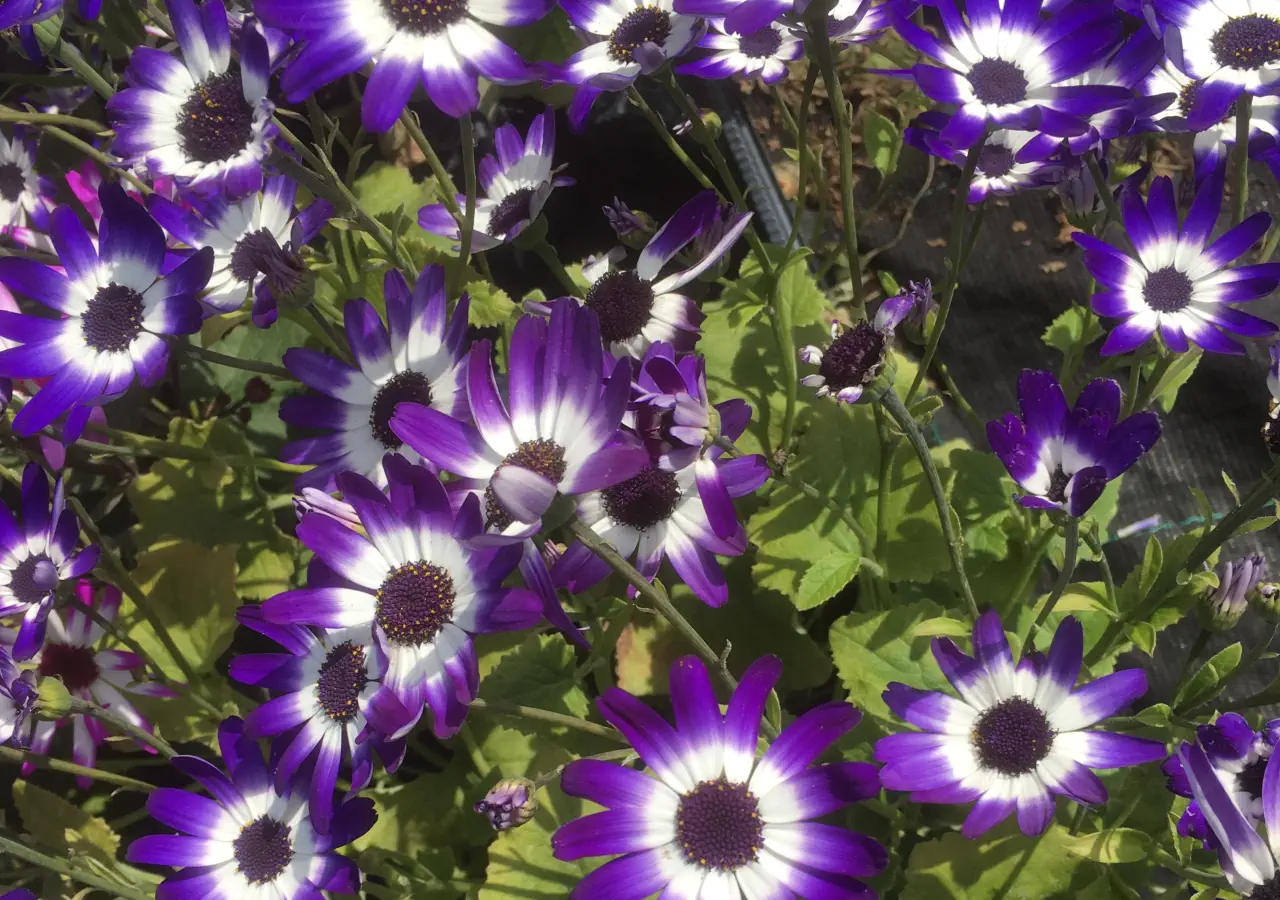Senetti

Senetti: The Bold, Beautiful Bloomer for Early Spring Colour
If you’re looking for a plant to bring a vibrant splash of colour to your garden in early spring, Senetti is a fantastic choice. Known for its striking blooms in shades of intense blue, purple, pink, and magenta, Senetti adds dramatic, eye-catching colour when other flowers are just starting to emerge. This cool-weather-loving plant is low-maintenance and incredibly rewarding, providing months of gorgeous blooms with a little care. Let’s dive into what makes Senetti special and how to enjoy it in your garden.
What is Senetti?
Senetti is a trademarked hybrid of Pericallis, a plant native to the Canary Islands, and is often referred to as Pericallis × hybrida in scientific terms. Unlike many other garden flowers, Senetti thrives in cooler weather, making it ideal for early spring when temperatures are still mild. The plant’s signature feature is its large, daisy-like flowers that cover the plant in a bold display, adding colour to gardens, containers, and patios when few other plants are in bloom.
One of the standout qualities of Senetti is its vivid colours—especially its shades of electric blue and purple, which are rare in garden plants. These rich, saturated colours create a strong visual impact, making Senetti a favourite for gardeners looking to make a bold statement.
Why Choose Senetti?
There are several reasons why Senetti is a popular choice for early-season gardeners:
Unique Colours: The intense blue and purple hues are unique among garden flowers, and Senetti offers some of the richest, most vibrant shades you’ll find.
Long Blooming Period: Senetti is a bountiful bloomer, typically flowering from early spring well into late spring or even early summer if temperatures stay cool.
Cold Tolerance: This plant is frost-tolerant and loves cooler weather, so it can be planted earlier than many other annuals, filling the gap between winter and summer blooms.
Easy Maintenance: Senetti is relatively low-maintenance, and with just a bit of deadheading, it will continue to produce flowers throughout its blooming season.
Great for Containers: With its compact size and bushy habit, Senetti is ideal for container planting, adding color to patios, balconies, and entryways where space may be limited.
Ideal Growing Conditions for Senetti
While Senetti is easy to care for, here are the ideal conditions to help it thrive:
Sunlight: Senetti prefers partial to full sun. Ideally, give it a spot that gets morning sun and some afternoon shade, especially in warmer climates. Too much direct sun in the afternoon can stress the plant.
Soil: Like many flowering plants, Senetti prefers well-draining soil that’s rich in organic matter. If you’re planting it in a container, use a high-quality potting mix for best results.
Watering: Keep the soil consistently moist, as Senetti likes regular watering. However, make sure the soil doesn’t stay soggy; good drainage is essential to prevent root rot.
Fertiliser: Use a balanced, slow-release fertiliser when you first plant Senetti, or apply a water-soluble fertiliser every couple of weeks during the growing season to encourage robust flowering.
Temperature: Senetti is a cool-weather plant, thriving in temperatures between 17°C–18°C (45°F and 65°F). It can tolerate light frosts, making it perfect for early spring gardens, but it will start to decline in high summer heat.
How to Use Senetti in Your Garden
Thanks to its bold colours and long blooming period, Senetti is an incredibly versatile plant. Here are some ideas for where to use it in your garden:
Containers and Planters: Senetti looks stunning in containers and planters, where you can place it as a focal point on a patio, balcony, or entryway. It pairs beautifully with other spring-blooming plants, like pansies or primroses, for a lively display.
Window Boxes: With its compact, mounding habit, Senetti works well in window boxes, bringing a burst of colour to windows and railings.
Mass Plantings: Planting Senetti in groups creates a bold statement, especially if you stick to one colour or alternate between two complementary shades.
How to Care for Senetti
While Senetti is low-maintenance, a few simple care tips will help you get the most out of your plants:
Deadheading: Remove deadheads/ blooms regularly to encourage new buds and extend the blooming season. This also keeps the plant looking tidy and vibrant.
Pruning: If the plant becomes leggy or begins to fade in warmer weather, you can trim it back to encourage new growth. In cooler climates, it may even rebloom in late summer or early fall after being trimmed.
Watch for Pests and Diseases: While Senetti is relatively pest-resistant, it can sometimes attract aphids or suffer from powdery mildew in humid conditions. Check plants regularly and use insecticidal soap or neem oil if pests become an issue.
Common Issues and Tips
Though Senetti is generally easygoing, here are a few potential issues to watch out for:
Yellowing Leaves: This is often a sign of overwatering or poor drainage. Ensure the soil is well-draining and adjust watering as needed.
Wilting in Heat: Senetti doesn’t handle high temperatures well, so if it begins wilting in hot weather, try to provide more shade or move container plants to a cooler spot.
Lack of Blooms: If Senetti stops blooming, it may need a light trim to encourage new growth. Be sure it’s getting enough light and nutrients as well.
Final Thoughts
With its rich colours, long blooming period, and low-maintenance care, Senetti is an exceptional plant for early spring gardens. It’s perfect for brightening up shaded areas or providing vivid colour during the cooler months when other flowers are just getting started.
Whether you’re planting it in containers, adding it to garden beds, tubs or window boxes, Senetti is bound to bring joy to your garden. Try it this season, and enjoy the bold, cheerful colour that this stunning plant has to offer!
